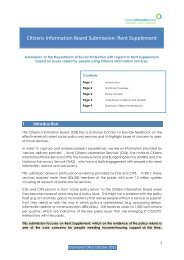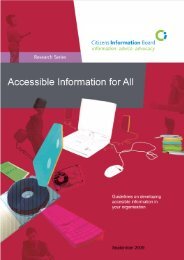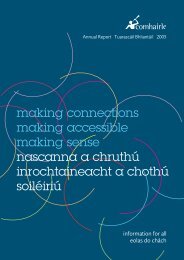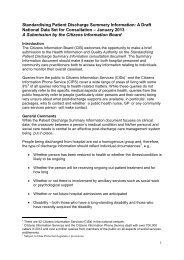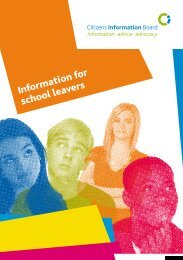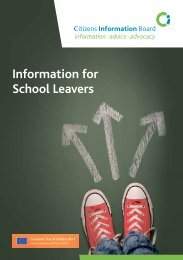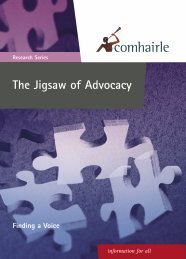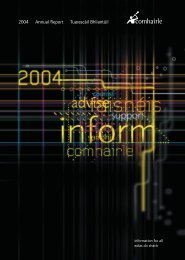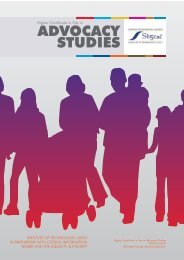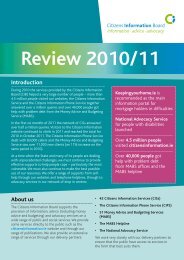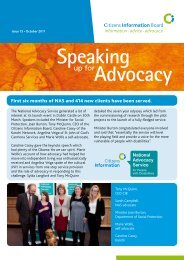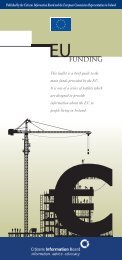Review of Sign Language Interpretation Services and Service ...
Review of Sign Language Interpretation Services and Service ...
Review of Sign Language Interpretation Services and Service ...
- No tags were found...
Create successful ePaper yourself
Turn your PDF publications into a flip-book with our unique Google optimized e-Paper software.
Figure 3.10. Total number <strong>of</strong> interpreters used by Irish <strong>Sign</strong> Link bygeographic distribution <strong>and</strong> skill levelTotal number <strong>of</strong> interpreters2826242220181614121086420Dublin Galway Limerick Kerry Sligo Laois Waterford Carlow Wicklow Louth Offaly CorkRegisteredQualifiedRegisteredTraineeAwaitingRegistrationRelayInterpreterNot RegisteredSource: Information provided by Irish <strong>Sign</strong> Link, August 2005The above graph illustrates that there is an uneven geographic spread in relationto interpreter skill levels, as well as interpreter numbers. It appears that onlyDublin, Galway <strong>and</strong> Kerry have registered qualified interpreters based in the area.This has implications for Deaf people given that Registered Qualified Interpretersare the only class <strong>of</strong> interpreter deemed appropriately skilled to work in medical<strong>and</strong> legal areas. There are also no Registered Trainees in many areas, which againwill have implications for Deaf people in relation to accessing registeredinterpreters when necessary.3.6.1 Accreditation <strong>and</strong> registration <strong>of</strong> Irish <strong>Sign</strong> <strong>Language</strong>/EnglishInterpretersAt present there is no formal accreditation <strong>and</strong> registration system for ISL/Englishinterpreters in Irel<strong>and</strong>. This issue is a major bottleneck in the system.There have been two rounds <strong>of</strong> accreditation for sign language interpreters in thepast, both <strong>of</strong> which were conducted by Irish <strong>Sign</strong> Link - one took place in 1998<strong>and</strong> the second took place in late 2000. Both <strong>of</strong> the accreditation processes thattook place were structured on two skill levels:• Interpreters who passed level one accreditation became Registered Trainees• Interpreters who passed level two became Registered Qualified Interpreters.Any new interpreters who have come on stream since the last accreditationprocess (for example, graduates from the Centre for Deaf Studies at TrinityCollege) are referred to as those Awaiting Registration.Of the 44 interpreters used by Irish <strong>Sign</strong> Link, 14 have been accredited, 24 areawaiting accreditation <strong>and</strong> 3 are not accredited (the remaining 3 are relayinterpreters who are considered by Irish <strong>Sign</strong> Link as not requiring accreditation,given that Irish <strong>Sign</strong> <strong>Language</strong> is their first language).page 54 • <strong>Review</strong> <strong>of</strong> <strong>Sign</strong> <strong>Language</strong> <strong>Interpretation</strong> <strong><strong>Service</strong>s</strong> <strong>and</strong> <strong>Service</strong> Requirements in Irel<strong>and</strong>



